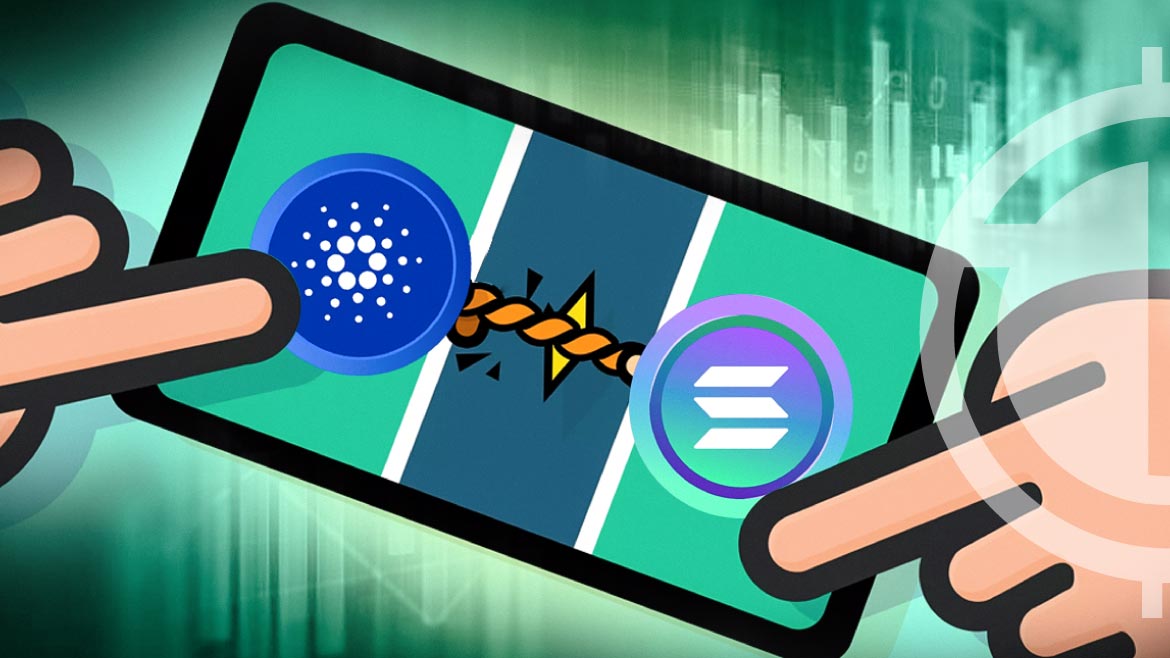- Cardano and Solana leaders debated projects’ fundamentals in a live-streamed “CryptoClash” event.
- Supporters of each blockchain loudly defended their preferred platform’s strengths and capabilities.
- Heated exchange raised awareness for Cardano and Solana but ended without declaring a clear winner.
In a recent video by InvestAnswers, the cryptocurrency community witnessed an intense face-off between two prominent blockchain platforms, Solana and Cardano. With over 2,000 votes from Patreon members and Twitter subscribers, the demand for this comparison was overwhelming.
In an exciting face-off of crypto giants, InvestAnswers presented a clash between ADA and SOL fundamentals:
🌟Get ready for a #CryptoClash!⚡️Witness this crazy⚔️ battle between $ADA and $SOL Fundamentals as these Layer 1 giants collide! Tune in live at 1pm PT to see who claims victory🏆 in this interesting #FaceOff!🔥 #Cardano #Solana #Fundamentals https://t.co/nIkfIcIero pic.twitter.com/xYT5FijgSj
— InvestAnswers (@invest_answers) August 2, 2023
The video, hosted by InvestAnswers, offered a purely data-driven analysis, emphasizing the importance of removing bias when making investment decisions. The aim was to explore the strengths and weaknesses of both platforms, allowing viewers to make informed choices in the ever-evolving crypto landscape.
Developers leverage Solana and Cardano as layer-one blockchains for building decentralized applications (dApps). Although they share similarities, they diverge in crucial aspects, including their choice of programming languages. Cardano is implemented in Haskell, while Solana predominantly utilizes Rust, C, and C++.
The InvestAnswers video presented the comparison of transaction speeds between Cardano and Solana as part of the analysis. The comments regarding the transaction speeds of the two platforms were not explicitly mentioned as part of a debate between opposing parties. Instead, the video aimed to objectively compare the two blockchain networks based on data and metrics.
The presenter highlighted Solana’s remarkable transaction speed of up to 710,000 transactions per second, which positions it as a strong contender in the scalability race, while Cardano was reported to handle up to seven transactions per second. Transaction fees were also compared, with Cardano averaging around nine cents and Solana offering dynamic fees at approximately 0.0025 cents.
The consensus mechanisms employed by the two platforms set them apart. Cardano relies on a proof-of-stake (PoS) model, while Solana uses a unique technology called proof of history, enabling exceptional transaction throughput and scalability.
Examining the ecosystems, both platforms boast substantial daily active users, with Solana taking the lead at around 250,000 to 450,000 users compared to Cardano’s 50,000. Market capitalization figures show a neck-and-neck competition, with Solana slightly edging out Cardano in both present and fully diluted values.
InvestAnswers also delved into the development languages, noting that Charles Hoskinson, the founder of Cardano, had admitted to the challenges posed by Haskell, hinting at exploring other options. Solana’s architecture, utilizing various innovations like proof of history, turbine, tower, and more, contributed to its impressive transaction throughput.
The analysis explored various metrics, presenting an insightful and comprehensive view of the two platforms. The video concluded with a “Delta Force” piece, revealing the striking differences in certain components that could impact the future trajectory of both projects.
As the crypto space evolves, the face-off between Solana and Cardano has shed light on their strengths and weaknesses. With an ever-changing market, the decision on which platform to support becomes increasingly critical for investors seeking value and growth in the decentralized finance ecosystem.






